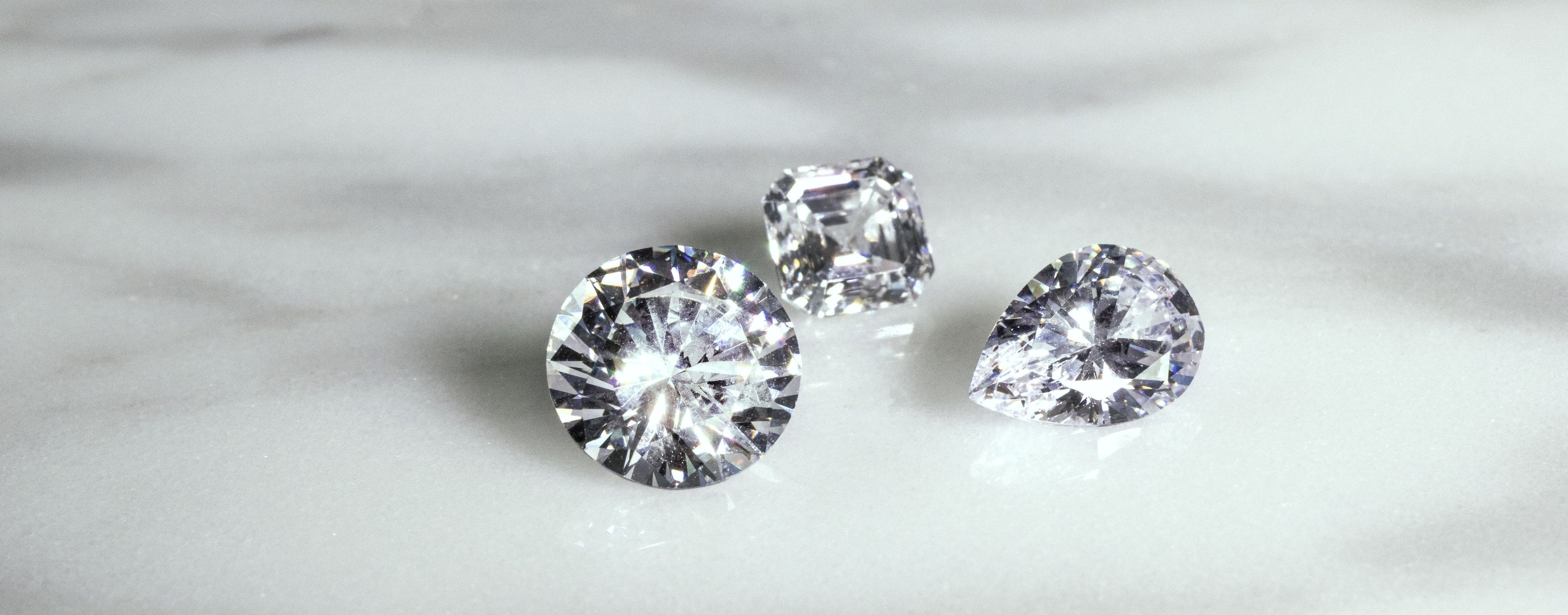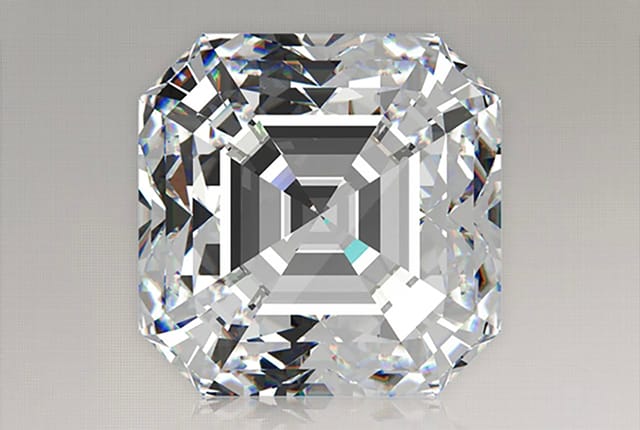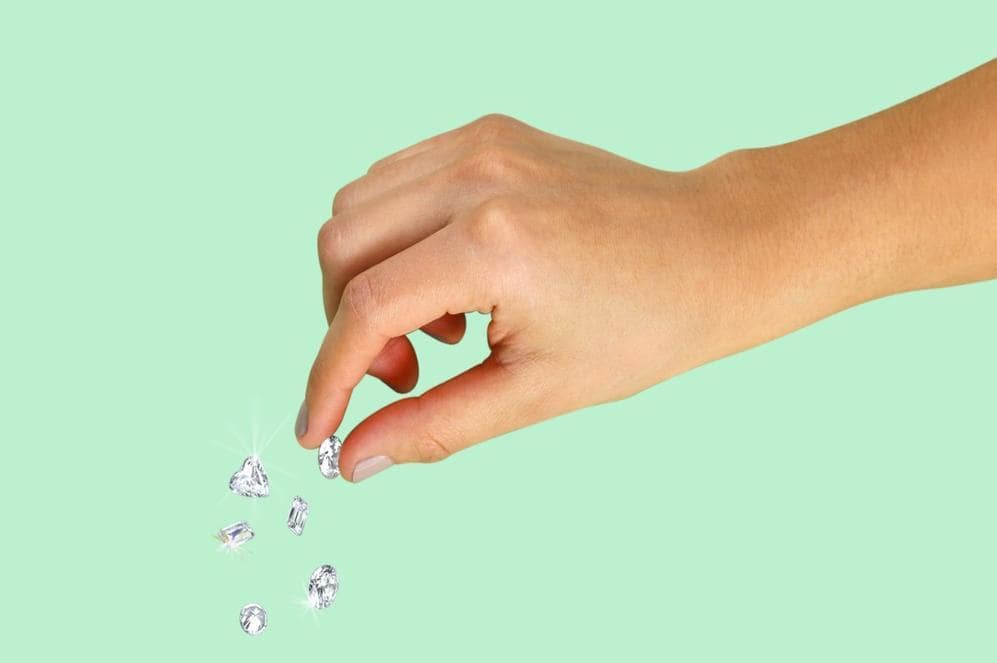What Is the Blue Nuance in Lab-Grown Diamonds?
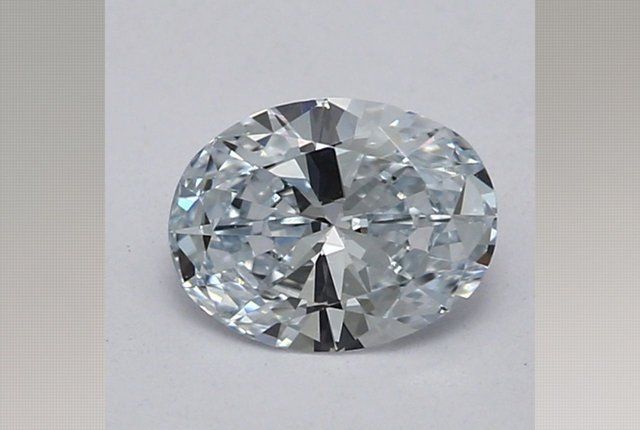
At Ritani, we want to help you choose the perfect lab-grown diamond, whether you are seeking one for your engagement ring, pendant, or pair of earrings. Before you shop for a lab-grown diamond, you should be aware of the blue nuance that some lab diamonds possess.
IN THIS ARTICLE, YOU’LL LEARN:
- What blue nuance is and why some lab diamonds have it
- The difference between fancy blue diamonds and blue nuance
- The difference between fluorescence and blue nuance
- How to avoid buying a blue nuance lab diamond
What is Blue Nuance and Why Do Some Lab-Created Diamonds Have It?
Some lab-grown diamonds are blue in appearance. This is called the blue nuance, shown in the image above. Some lab diamonds even have a greenish tint, rather than a blue one.
The blue nuance occurs in diamonds that are grown through the HPHT (high pressure high temperature) process. Luckily, not all HPHT diamonds have it.
During the HPHT process, lab diamonds are sometimes exposed to boron, which speeds up the diamond growth process. Boron impurities are what cause the diamond to turn blue. Natural fancy blue diamonds get their color from boron being present while they are formed, too.
Fancy Blue Diamonds vs Blue Nuance
You may be wondering what the difference is between fancy blue diamonds and diamonds with a blue nuance since they both are blue in appearance.
Both diamonds with a blue nuance and fancy blue diamonds are classified as type IIb diamonds. These extremely rare diamonds are semiconductive, meaning they can conduct electricity, and contain boron impurities.
Diamonds with a blue nuance have a faint blue hue but are still regular “colorless” diamonds and are graded as such. For example, the diamond below with a blue nuance received a “G” color grade.
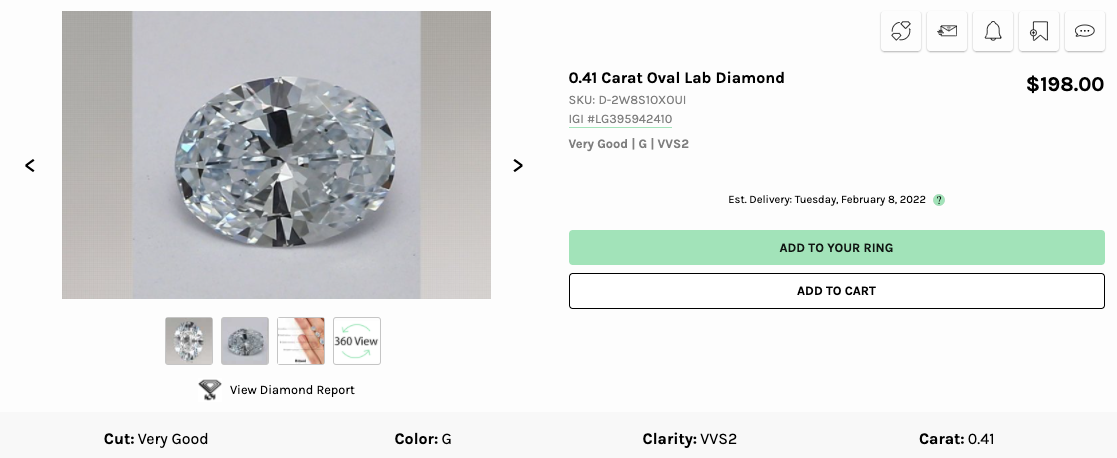
Fancy blue diamonds, on the other hand, have more saturated color and are graded differently as they are not colorless diamonds. Fancy color diamonds can receive one of the following color grades: Faint, Very Light, Light, Fancy Light, Fancy, Fancy Intense, Fancy Vivid, and Fancy Deep. Below is the world’s most famous fancy blue diamond, the Hope Diamond.
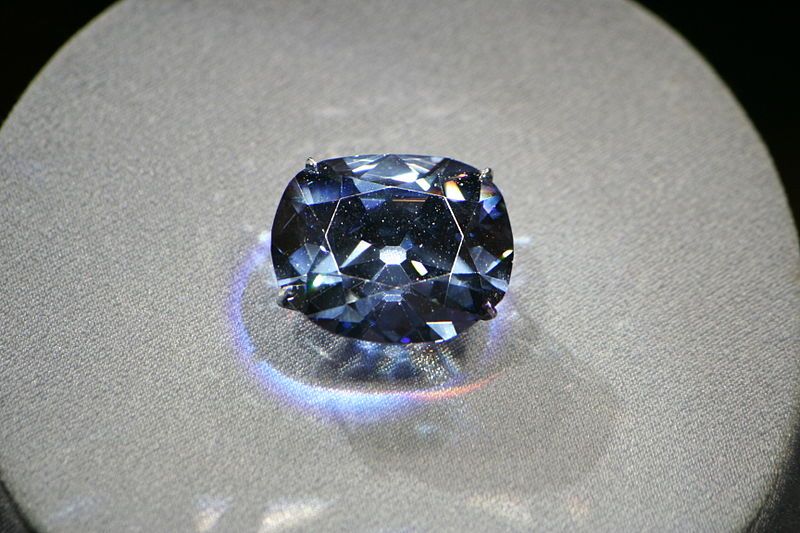
This diamond received a “fancy deep grayish blue” color grade.
Fluorescence vs Blue Nuance
Boron is a culprit in diamonds with fluorescence, as well as diamonds with a blue nuance. However, fluorescence is not the same as the blue nuance.
Fluorescence is when a diamond glows a certain color under UV light. For most diamonds with fluorescence, they glow blue under UV light, however, they can also glow yellow, green, orange, red, or white. Diamonds with fluorescence don’t always contain trace elements of boron; they can also contain aluminum or nitrogen.
Diamonds with a blue nuance will appear blue no matter what type of lighting they are in.
Is Blue Nuance a Bad Thing?
Most shoppers seek a diamond that appears colorless and will shy away from diamonds with a blue nuance. However, if you think stones with a blue nuance are alluring, why not go for one? A diamond with a blueish tint will make for a unique engagement ring.
It’s important to note that the boron in HPHT-grown diamonds can cause them to have issues with diamond testers. Sometimes, HPHT diamonds will not read as a real diamond with a diamond tester, even though they are real diamonds. You can learn more about testing lab-grown diamonds here.
How To Avoid Diamonds with a Blue Nuance
1. View HD Imagery
It’s essential to view HD imagery and/or videos of any diamond before purchasing it, but it’s even more important to do so with lab-grown diamonds to ensure they don’t have a blue tint.
2. Check Its Certificate
It should be noted in a diamond’s grading report if the diamond has a blue nuance, but it isn’t always. This can usually be found in the “comments” section of the diamond’s report.

3. See It In Person
The best way to determine a diamond’s color is to view it in person. At Ritani, we offer Free In-Store Preview, which allows you to preview your loose diamond or engagement ring at a local jeweler or WeWork near you before purchasing it. If you’re not happy with the diamond or ring, there's no pressure to take it home.
It’s also important to make sure that wherever you get your lab diamond from has a reasonable return policy so you can return the stone if you don’t like it in person.
Up Next: How Are Lab Grown Diamonds Made?

